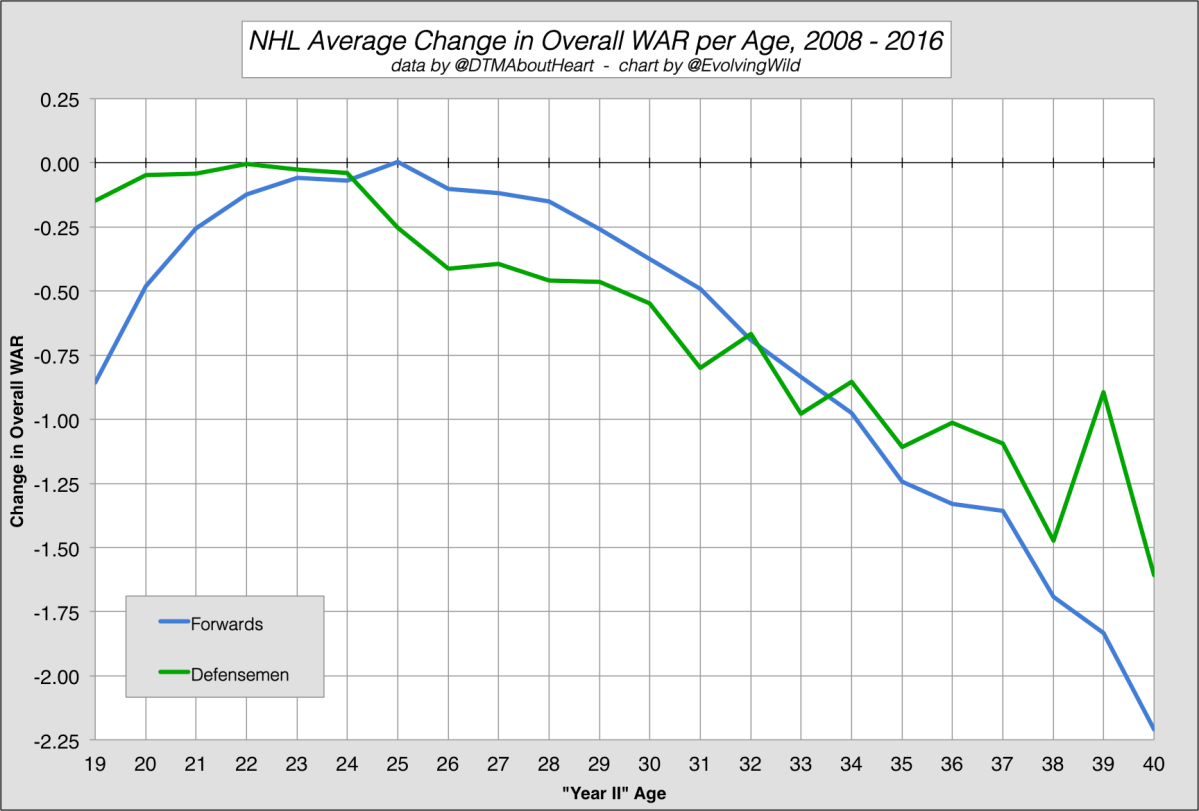I don't. Player development seems boring and I don't have time to worry about that.
But I think I do have a reasonable grasp on the frequency at which players improve from their rookie years, and the magnitude of said improvements.
How do NHL players age? When do they peak? How quickly do they decline? Questions about player aging in the NHL have been debated for years, and an incredible amount of research has already been do…

hockey-graphs.com
In particular, it appears that defensemen don't really get better as they age, but rather are most impactful as soon as they enter the league. Here's a chart to that effect:
View attachment 553177
And this jives with current results, right? Adam Fox and Cale Makar are already incredibly impactful right now. Erik Karlsson and PK Subban were winning Norris Trophies in their early 20s, now they both aren't very good. John Carlson is seemingly no better or worse now than he was in the 2013-15 period when he was 23-25 years old. Alzner didn't really change much from when he was a rookie. Mike Green didn't really get any better over time.
There are exceptions of course, but the general trend is that defensemen kind of are who they are when they enter the league. Unless there is a specific reason to believe Fehervary will buck this trend, then I think they have to enter next season assuming Fehervary is going to struggle and need to have a contingency plan.
Fehervary contracting COVID is really the only explanation that can explain his poor performance last year, aside from him just not being good. If COVID is why he struggled then I'd be confident in a bounceback season. Otherwise I'm going to be a little pessimistic about his future performance.
On a positive note:, I believe Connor McMichael could be primed for a big improvement next year. If he gets an opportunity.

